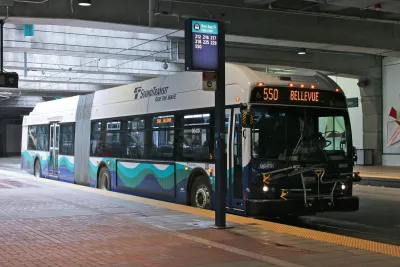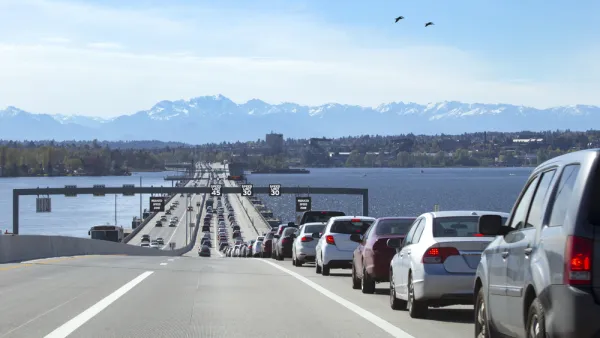The 2017 survey shows that most people drive, but income and housing location also affect people’s options and choices.

Stephen Fesler reports on the Puget Sound Regional Council’s release of its 2017 household travel survey data. The survey gathered information on travel behavior, parking and transit costs, and the factors related to mode choice.
It finds that most people, over 80 percent, have free parking at work, and high-income workers have more access to subsidized transit passes. “Larger employers–which tend to be higher paying–are required to create a [Commute Trip Reduction] program for employees. These programs often include subsidized or free transit passes. However, that often leaves lower-income individuals without cheaper transit options unless they qualify for ORCA LIFT, a reduced fare program that King County launched in 2015,” writes Fesler. In addition, the majority of transit users are reaching transit on foot.
Most people across all income levels drive, but lower-income households are more likely to walk or use transit, the survey shows. Fesler describes the mode choice differences by race:
Asians had the highest drive-alone and biking rates while reporting lower shared driving trips. Black, Latino, and other multiracial households reported double the transit rate, substantially lower drive-alone rates, and higher shared driving trips. Caucasian households had the lowest transit use rates, but otherwise were middle of the pack for other modes.
The survey also examines the ways in which housing affects mode choice. People living in Seattle’s regional growth centers—higher density, mixed-use areas—are more likely to walk or use transit and less likely to drive than people living in centers outside of Seattle or those not living in centers.
In addition, most of the lower-income respondents report that living in a walkable area near activities is important to them. “This was increasingly less important to middle-income and higher-income households. It seems very likely that this is related to regular access to a car, which very low-income households generally lack,” notes Fesler. A similar income pattern emerged in terms of the importance of close transit, with a majority of low-income respondents indicating this was important.
FULL STORY: PSRC’s 2017 Travel Survey Shows Transit Is Popular, Free Parking Induces Driving

Analysis: Cybertruck Fatality Rate Far Exceeds That of Ford Pinto
The Tesla Cybertruck was recalled seven times last year.

National Parks Layoffs Will Cause Communities to Lose Billions
Thousands of essential park workers were laid off this week, just before the busy spring break season.

Retro-silient?: America’s First “Eco-burb,” The Woodlands Turns 50
A master-planned community north of Houston offers lessons on green infrastructure and resilient design, but falls short of its founder’s lofty affordability and walkability goals.

Test News Post 1
This is a summary

Analysis: Cybertruck Fatality Rate Far Exceeds That of Ford Pinto
The Tesla Cybertruck was recalled seven times last year.

Test News Headline 46
Test for the image on the front page.
Urban Design for Planners 1: Software Tools
This six-course series explores essential urban design concepts using open source software and equips planners with the tools they need to participate fully in the urban design process.
Planning for Universal Design
Learn the tools for implementing Universal Design in planning regulations.
EMC Planning Group, Inc.
Planetizen
Planetizen
Mpact (formerly Rail~Volution)
Great Falls Development Authority, Inc.
HUDs Office of Policy Development and Research
NYU Wagner Graduate School of Public Service



























